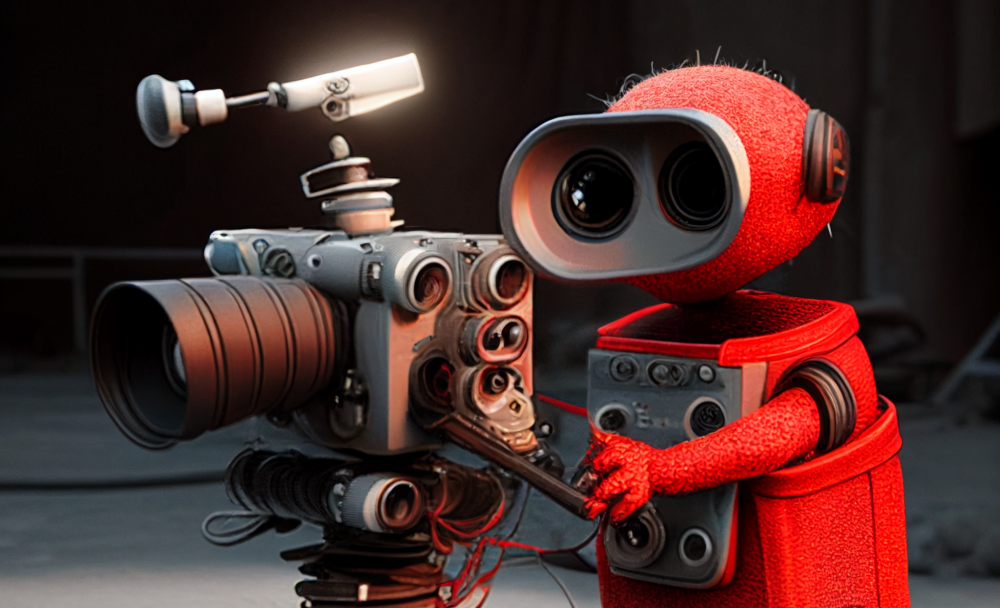With all the hype around artificial intelligence (AI), it can be hard to cut through the noise and understand how advertising companies are actually using the technology today. Creative agency Media.Monks, the digital-first operating brand of S4 Capital, has embraced the tech with open arms, not least in their video creation capabilities.
“We are using everything that is possible to use, from mood boarding to frame interpolation,” says Joán Llabata, Associate Creative Director at Media.Monks. “Every AI application that we can use to get things done better and faster.” Some examples of the applications in Media.Monks toolkit are:
Midjourney – a text-to-image program not unlike OpenAI’s viral DALL-E system. The agency uses Midjourney at the concept stage for visualising ideas.
Stable Diffusion – an open source tool that generates images from prompts. While capable of creating photo-realistic images, Stable Diffusion is less reliable for video which can appear jittery.
Runway – a text-to-video system that creates three-second videos from prompts or reference images. Users can edit or modify videos using natural language descriptions.
Using these systems in combination speeds up the video process, and AI is constantly learning and improving. “I know a lot of colleagues use separate tools in the same phase and let them talk to each other,” says Mariëlle Tolen, Associate Creative Director at Media.Monks.
But as anyone who has messed around with DALL-E or ChatGPT will know, these machines still need direction and curation to produce work to a professional standard. “When it comes to video creation or filmmaking, there are so many aspects to it, and the craft should always be in the foreground,” comments Tolen. So rather than “using AI for the sake of using AI,” the creative process should still start by considering what you want to achieve – then find the application that best fits the ask.
To the moon
When properly deployed, AI becomes an “extra tool” in the creative’s toolkit; one that opens up the boundaries of what is creatively possible. “Could we shoot this beautiful scene on the moon? Actually we can maybe create a moon,” explains Tolen. “So I feel like it’s expanded the way we can think.”
Currently there is no catch-all video creation tool, or “ChatGPT for video”, though this is probably all a matter of time. “Very soon we’re going to see applications that are fully focused on video AI generation,” predicts Llabata. “Eventually you will be able to get a video just from a description.”
As it stands, the difficulty lies in having to explain the concept of video to a machine. “It’s actually very complicated,” he notes. “It’s all about continuity, and where you place things, and you have to define every single thing in the frame to get consistency between frames.”
Yet the rate of progress makes such capabilities not only possible but inevitable. “We’ve seen exponential development in AI,” says Tolen. “We’re now at a point where I think everything is possible. If something was impossible a minute ago, I blink or I sneeze twice, it’s probably possible now.”
Indeed, the use of digital avatars instead of actors is almost common practice at this point, not only in Hollywood productions but also advertising. “We already scan actors, create avatars and make them do things that otherwise would be impossible or extremely cost prohibitive,” observes Llabata. “That doesn’t have to be detrimental to the talent, it just opens up new types of collaboration.”
The wider issue of AI replacing people’s jobs is not so easily dismissed, but Media.Monks is careful to put these tools in the right hands to make its teams more efficient. “We’re looking for new ways to allow people to do amazing things that they previously couldn’t,” remarks Llabata. By the same token, giving creative AI tools to business people doesn’t make them creative. “We all have our roles,” he adds. “The same way ChatGPT doesn’t make me a general manager, because I can’t write emails!”
He uses the analogy of someone going to a photography exhibition and asking the photographer what camera and film they use, and buying the same equipment, expecting it to make them a great photographer. “The question that you want to ask is what inspires you? What are your references? What do you want to communicate?” says Llabata. “Everything else is just playing with the tools you have in order to get the message out.”





